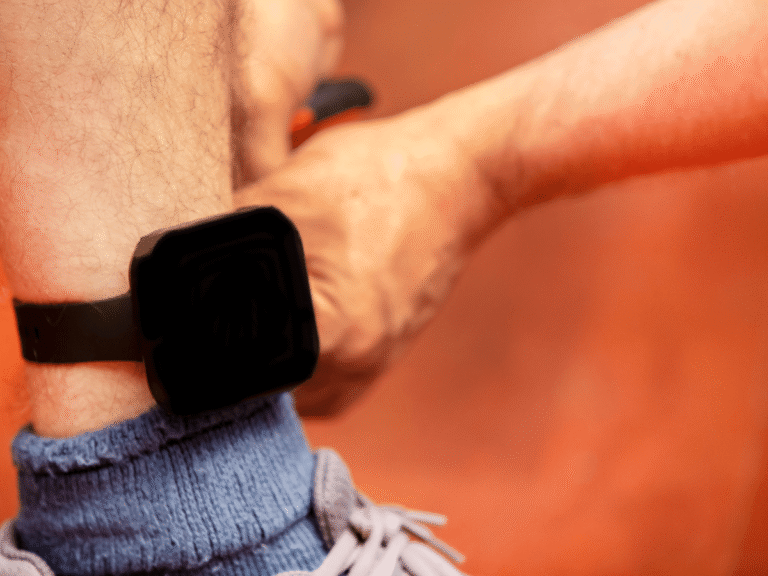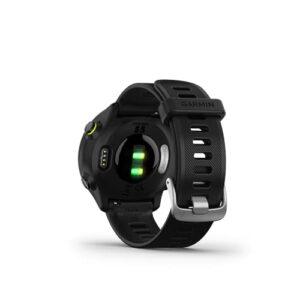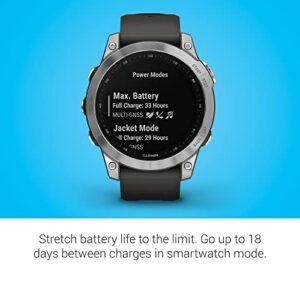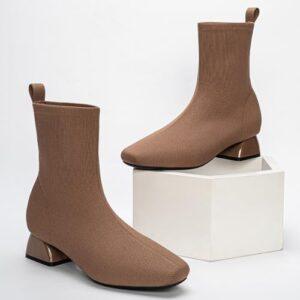Have you ever wondered if a scram bracelet can catch alcohol from the day before? If you’re wearing one or facing testing, this question matters a lot.
You want to know exactly how it works and what it can detect. Imagine the peace of mind that comes with understanding how your body’s alcohol levels show up on these devices. Keep reading, and you’ll get clear answers that can help you stay informed and in control.

Credit: wlos.com
How Scram Bracelets Work
Understanding how Scram bracelets work helps clarify their role in alcohol monitoring. These devices offer continuous tracking by measuring alcohol levels through the skin. They provide reliable data over time, making them useful for legal and personal monitoring.
Technology Behind Detection
Scram bracelets use transdermal alcohol sensing technology. They detect alcohol vapor released through the skin. Sensors measure this vapor every 30 minutes. The device records the data and sends it to monitoring authorities. This method tracks alcohol consumption even after drinking stops.
Types Of Alcohol Monitored
Scram bracelets measure ethanol, the type of alcohol found in drinks. They do not detect other substances like drugs. The device focuses on alcohol that leaves the body through sweat. This approach helps identify drinking from previous hours or days. It shows if alcohol was present recently.
Wearing And Maintenance
The bracelet must stay on the ankle at all times. Removing or tampering with it triggers alerts. Users should keep the device dry and clean. Regular checks ensure it works correctly. Proper care improves accuracy and prevents false readings.
Alcohol Metabolism And Detection Time
Understanding how alcohol moves through the body helps explain how detection devices work. The process of breaking down alcohol and the time it stays in the body affect detection results. This section covers how alcohol leaves the body, what affects detection time, and common detection periods.
How Alcohol Leaves The Body
Alcohol enters the bloodstream quickly after drinking. The liver breaks down most of the alcohol. It changes alcohol into water and carbon dioxide. Some alcohol leaves the body through breath, sweat, and urine. The liver can process about one standard drink per hour.
Factors Affecting Detection Window
Many things change how long alcohol stays in the body. Body weight and age affect alcohol breakdown speed. Drinking food slows down alcohol absorption. Drinking a lot at once raises blood alcohol levels. Health and liver condition also change metabolism rates. Each person’s body reacts differently to alcohol.
Typical Detection Periods
Alcohol stays in the breath for up to 24 hours. Blood tests detect alcohol for up to 12 hours. Urine tests can find alcohol for 1 to 3 days. SCRAM bracelets detect alcohol in sweat for about 1 to 3 days. Sweat testing shows alcohol use over a longer time than breath tests.
Scram Bracelet And Previous Day Alcohol
The SCRAM bracelet is a device used to monitor alcohol levels through the skin. It measures alcohol in sweat continuously. A common question is whether it can detect alcohol consumed the day before. This is important for people under court orders or treatment programs.
The bracelet does not just check for alcohol in the moment. It can also pick up traces left in the body from previous drinking. Understanding how it works helps clarify its ability to detect past alcohol use.
Sensitivity To Residual Alcohol
The SCRAM bracelet senses alcohol leaving the body through sweat. Alcohol can stay in the system for many hours after drinking stops. This means the device can detect alcohol from the day before, depending on several factors.
Factors such as how much was drunk, metabolism speed, and body size affect detection. The bracelet has high sensitivity, picking up small amounts of alcohol. Traces may remain detectable up to 24 hours or more after drinking.
Scientific Studies And Findings
Research shows the SCRAM bracelet can detect alcohol for a long time after drinking. Studies confirm its accuracy in identifying alcohol in sweat. Results indicate it can detect alcohol consumed the previous day.
Tests also show that detection depends on drinking amount and time since last drink. Lower levels of alcohol may not be detected after a full day. Higher levels of drinking leave alcohol traces longer.
User Experiences And Reports
Many users report the bracelet alerts them about alcohol from the night before. Some say it detected small amounts even after 24 hours. Others notice it stops detecting after a day if drinking was light.
User reports support scientific findings. The bracelet can detect residual alcohol but depends on individual drinking habits. It helps users stay aware of their alcohol levels over time.
Common Misconceptions
Many people have wrong ideas about how a SCRAM bracelet works. These devices do not detect alcohol from the day before. They measure alcohol through sweat, not by checking blood or breath directly. Understanding these facts helps clear up common myths. Let’s explore some of the biggest misunderstandings about SCRAM bracelets and alcohol detection.
False Positives Explained
False positives happen when the bracelet shows alcohol but none was consumed. This can occur from exposure to alcohol-based products. Lotions, cleaning sprays, or even some foods can cause small readings. The device is designed to avoid these errors by setting strict limits. It needs a certain level of alcohol to confirm drinking. Simple contact with alcohol does not cause a false positive result.
Difference Between Breath And Sweat Testing
Breath tests measure alcohol in the air from the lungs. Sweat tests check alcohol leaving the skin. These methods work differently and show different timelines. Breath tests detect recent drinking, usually within hours. SCRAM bracelets detect alcohol over longer periods, but only from sweat. The bracelet cannot read alcohol from a full day ago. It tracks alcohol as it leaves the body through the skin.
Impact Of Hydration And Skin Type
Hydration changes how much a person sweats. More sweat can mean clearer alcohol signals. Dry skin or less sweat might slow detection. Skin type and sweating vary by person and condition. These factors can affect how quickly the bracelet reads alcohol. The device adjusts for these differences to stay accurate. It does not rely solely on sweat amount but on consistent testing over time.
Legal And Practical Implications
Understanding the legal and practical implications of SCRAM bracelets is crucial. These devices monitor alcohol use continuously. They detect alcohol through the skin, even from the previous day. This feature raises important questions about court acceptance, consequences, and compliance. Each factor plays a key role in how the data is used and interpreted.
Court Acceptance Of Scram Data
Court systems widely accept SCRAM bracelet data as reliable evidence. The device provides continuous and objective monitoring. Judges often rely on this data to assess alcohol consumption. Courts see it as a tool to enforce sobriety orders. Data from the previous day can influence legal decisions. The accuracy of SCRAM readings supports its use in court cases.
Consequences Of Positive Readings
Positive alcohol readings can lead to serious consequences. They may result in penalties or extended monitoring periods. Courts may impose fines or jail time. Positive tests can affect probation or parole status. The detection of alcohol from the day before is treated seriously. This underscores the importance of strict compliance with court orders.
Best Practices For Compliance
Following best practices helps avoid violations and penalties. Always wear the SCRAM bracelet as instructed. Avoid any alcohol consumption during the monitoring period. Inform the court or probation officer about any concerns. Regularly check the device for proper functioning. Staying informed and responsible improves compliance success.

Credit: www.pressdemocrat.com
Alternatives To Scram Bracelets
Scram bracelets are well-known tools for monitoring alcohol use. Still, they are not the only option. Several alternatives exist that offer different ways to track alcohol consumption. These devices vary in form, function, and accuracy. Exploring these choices helps find the best fit for personal needs.
Other Alcohol Monitoring Devices
There are several devices besides Scram bracelets. Breathalyzers are popular and easy to use. They measure alcohol in the breath instantly. Continuous transdermal alcohol monitors also exist. They track alcohol through the skin over time. Some devices use saliva or blood tests for detection. Each type offers unique benefits and limits.
Pros And Cons Compared To Scram
Scram bracelets provide continuous, passive monitoring. Breathalyzers require active use and offer only moment checks. Transdermal monitors give ongoing data but may be costly. Saliva or blood tests are accurate but invasive. Scram bracelets can detect alcohol for up to several days. Other devices might only show recent drinking. Comfort and privacy also differ among options.
Choosing The Right Device
Think about lifestyle and monitoring needs first. Choose a device that matches your daily routine. Consider cost, ease of use, and accuracy. Some devices need regular charging or maintenance. Others require professional installation or supervision. Find the balance between convenience and reliability. The right choice supports better monitoring and results.

Credit: www.ohioams.com
Frequently Asked Questions
Can A Scram Bracelet Detect Alcohol Consumed The Day Before?
Yes, a scram bracelet can detect alcohol from the previous day. It measures transdermal alcohol concentration continuously, reflecting recent drinking. Alcohol metabolites stay in the skin for hours, allowing detection even after blood alcohol levels drop.
How Accurate Is A Scram Bracelet In Detecting Past Alcohol Use?
Scram bracelets are highly accurate in monitoring alcohol use over time. They sample alcohol expelled through the skin every 30 minutes. This continuous monitoring ensures reliable detection of alcohol consumed within the last 24 hours or longer.
Does Food Or Medication Affect Scram Bracelet Alcohol Detection?
No, food or medication does not affect scram bracelet readings. The device only measures alcohol molecules excreted through the skin. However, some strong chemicals or lotions might interfere, but typical foods and medications do not impact results.
How Long After Drinking Can A Scram Bracelet Detect Alcohol?
A scram bracelet can detect alcohol for up to 24 hours or more after drinking. It depends on the amount consumed and individual metabolism. The device tracks alcohol elimination through the skin continuously, enabling extended detection windows.
Conclusion
A scram bracelet can detect alcohol from the day before drinking. It measures alcohol through the skin continuously. This helps track recent drinking habits accurately. The bracelet cannot tell exact times but shows alcohol presence over hours. Wearers should know it stays active for about 24 to 48 hours.
This device supports accountability and helps with monitoring. Understanding how it works can clear up common questions. It offers a reliable way to stay honest about alcohol use. Always follow rules and guidelines when using such devices.

Madison Clark is a footwear expert and the voice behind MyStyleGrid.com. She specializes in honest shoe reviews, style tips, and practical guides to help readers find the perfect pair for any occasion. With years of experience in blogging and content creation, Madison makes footwear knowledge simple, stylish, and easy to follow.







